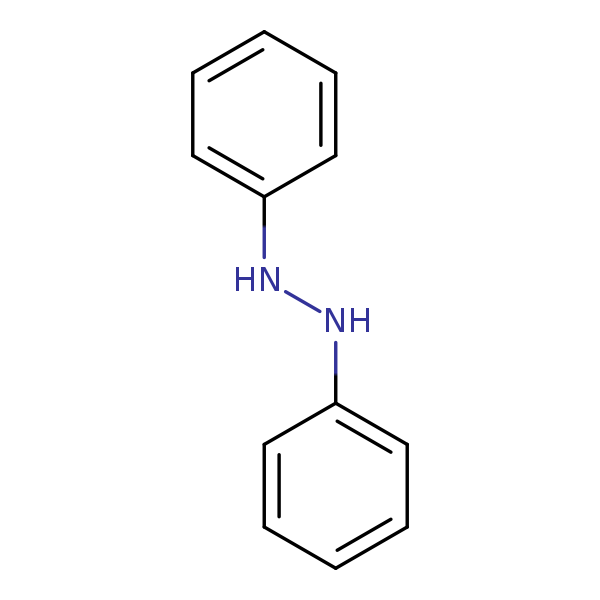1,2-Diphenylhydrazine
CASRN 122-66-7 | DTXSID7020710
- IRIS Summary (PDF) (11 pp, 107 K)
On this page:
Noncancer Assessment
Reference Dose for Oral Exposure (RfD) (PDF) (11 pp, 107 K) Last Updated:
Not assessed under the IRIS Program.
Reference Concentration for Inhalation Exposure (RfC) (PDF) (11 pp, 107 K) Last Updated: 11/01/1991
Information reviewed but value not estimated.
Cancer Assessment
Weight of Evidence for Cancer (PDF)
(11 pp, 107 K)
Last Updated: 01/31/1987
| WOE Characterization | Framework for WOE Characterization |
|---|---|
| B2 (Probable human carcinogen - based on sufficient evidence of carcinogenicity in animals) | Guidelines for Carcinogen Risk Assessment (U.S. EPA, 1986) |
- Positive results of studies in both rats and mice form the basis for this classification. Two apparently negative studies lack information on compound purity, experimental design, and statistical treatment.
- This may be a synopsis of the full weight-of-evidence narrative.
Quantitative Estimate of Carcinogenic Risk from Oral Exposure (PDF) (11 pp, 107 K)
Oral Slope Factor:
8.0
x 10-1
per mg/kg-day
Drinking Water Unit Risk:
2.2
x 10-5
per µg/L
Extrapolation Method: Linearized multistage procedure, extra risk
Tumor site(s): Hepatic
Tumor type(s): Hepatocellular carcinomas and neoplastic liver nodules (NCI, 1979)
Quantitative Estimate of Carcinogenic Risk from Inhalation Exposure (PDF) (11 pp, 107 K)
Inhalation Unit Risk:
2.2
x 10-4
per µg/m3
Extrapolation Method: Linearized multistage procedure, extra risk
Tumor site(s): Hepatic
Tumor type(s): Hepatocellular carcinomas and neoplastic liver nodules (NCI, 1979)
Other EPA Information
- Human Health Benchmarks for Pesticides (HHBP). This database provides human health benchmarks for pesticides that may be present in drinking water.
- Office of Pesticide Programs Pesticide Chemical Search. This database provides links to health effects information and registration status for pesticides.
- Chemistry Dashboard. This database provides information on chemical structures, experimental and predicted physicochemical, and toxicity data.
Tumor Sites
Chemical Structure

Synonyms
- Benzene, hydrazodi-
- Diphenylhydrazine
- Diphenylhydrazine, 1,2-
- Hydrazine, 1,2-dihpenyl-
- Hydrazobenzene
- N,N'-Bianiline
- NCOI-C01854
- RCRA Waste Number u109
- (sym)-Dihpenylhydrazine
- 1,2-Diphenylhydrazine
- 122-66-7

